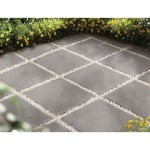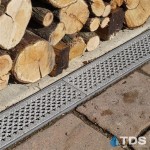How To Level Off Ground For Patio
Preparing the ground for a patio is a crucial step in creating a sturdy and level surface for your outdoor living space. Whether you're installing pavers, concrete, or any other patio material, a well-leveled ground ensures a stable base and prevents unevenness or settling over time. Here's a comprehensive guide on how to level off ground for a patio:
1. Determine the Desired Patio Height and Slope
Start by marking the perimeter of the patio area and determining the desired height. Consider the surrounding landscape and drainage to ensure water doesn't pool on the patio surface. A slight slope away from the house or other structures is typically recommended for drainage purposes.
2. Remove Existing Vegetation and Organic Matter
Clear the patio area of all vegetation, including grass, weeds, and roots. Remove any organic matter such as leaves, mulch, or topsoil, as it can decompose over time and create an uneven surface. If there are significant amounts of roots, consider using a root remover to ensure a stable base.
3. Excavate the Area
Using a shovel, excavator, or other digging tool, excavate the ground to the desired depth. The excavation depth will vary depending on the type of patio material you're using. Pavers typically require a minimum of 4 inches of base material, while concrete may require a 6-inch deep excavation.
4. Compact the Soil
Once the area is excavated, compact the soil using a plate compactor or a hand tamp. This process removes air pockets and creates a firm, stable base for the patio. Ensure the soil is level and free of any significant bumps or dips.
5. Add Base Material
The next step is to add a base material to create a level and stable surface. Crushed stone, gravel, or sand are common choices for patio base materials. Spread the material evenly over the excavated area and compact it thoroughly using a plate compactor.
6. Level the Base Material
Using a long level or laser level, check for any unevenness in the base material. Add or remove material as needed to achieve a level surface. Compact the base material again to ensure it's firm and stable.
7. Install Edging (Optional)
To retain the base material and create a defined edge for your patio, consider installing edging. Edging can be made from various materials such as concrete, metal, or plastic. Dig a shallow trench around the perimeter of the patio area and set the edging in place, ensuring it's level and secure.
8. Check for Drainage
Finally, check for proper drainage. Water should flow away from the patio surface and not pool in any areas. If necessary, adjust the slope of the base material or install a drainage system to ensure efficient water management.
Leveling off ground for a patio requires careful preparation and attention to detail. By following these steps, you can create a stable, level, and well-drained foundation for your outdoor living space that will last for years to come.

How To Level The Ground For Base Prep Pavers Perfect Patio Series Part 2 Diy

Level Soil For A Patio

How To Level The Ground For Pavers 15 Steps With Pictures

How To Level The Ground For Pavers 15 Steps With Pictures

Leveling Out The Ground Ole Fashioned Way

Ultimate Guide How To Level Ground For Patio Pavers Pnw Excavation Tacoma

Leveling Your Lawn The Right Way

How To Level The Ground For Base Prep Pavers Perfect Patio Series Part 2 Diy

Leveling The Ground For Your Paver Patio Pavertime

How To Level The Ground For Pavers 15 Steps With Pictures
Related Posts








